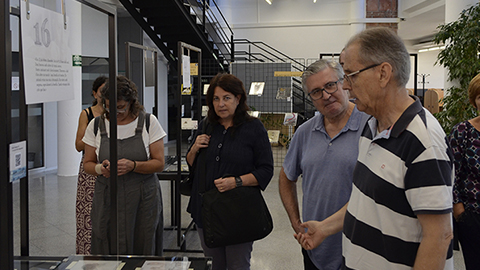La UAB acull "L'art de la ciència. Jordi Sabater Pi", itinerant exhibition of the naturalist's drawings
From 2 to 31 October, the exhibition "L’art de la ciència. Jordi Sabater Pi" wiull be on display at the Library of Veterinary Medicine, where visitors will be able to discover the capacity of observation of this naturalist through his drawings.

Jordi Sabater Pi (Barcelona, 2 August 1922 - 5 August 2009) was a Catalan naturalist known mainly for his discovery of the albino coastal gorilla who lived almost 40 years in the Barcelona Zoo, named Floquet de Neu (Snowflake). However, his scientific achievements are known worldwide thanks to his discoveries of the tools used by chimpanzees and cultures such as those of the Fang people.
The exhibition shows the importance of scientific drawings and begins with an introduction of its origins,showing what they are and what field notebooks represent in different scientific disciplines. The exhibition goes on to show fragments of the life of the ethologist and his research through a series of original sketches Sabater drew throughout his lifetime, accompanied by a QR code which is linked to interviews he gave shortly before his death. Finally, the present and future of scientific illustration, from photography to three-dimensional representations.
The exhibition was inaugurated on 10 October and included the presence of Vice Rector for Communication and Culture Virginia Luzón and son of the primatologist Josep Oriol Sabater i Coca.
After a speech in which he thanked the Universitat Autònoma de Barcelona for organising the exhibition, Sabater i Coca guided attendants around the exhibition, with an explanation of each piece and stories about his father, the ethologist.
Organised by Molècula, Xarxa de Professionals de la Museografia, with the support of the Museu d'Història de Catalunya, the Catalan Ministry for Culture, the DIDPATRI Research Group at the UB, and the UAB Cultura en Viu Unit, the exhibition will be on display until 31 October.